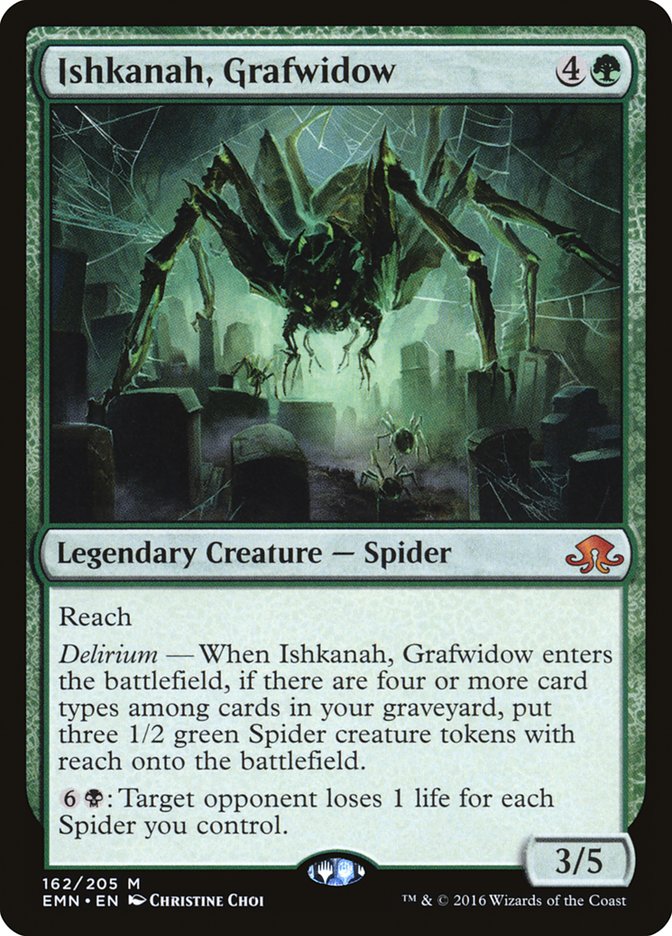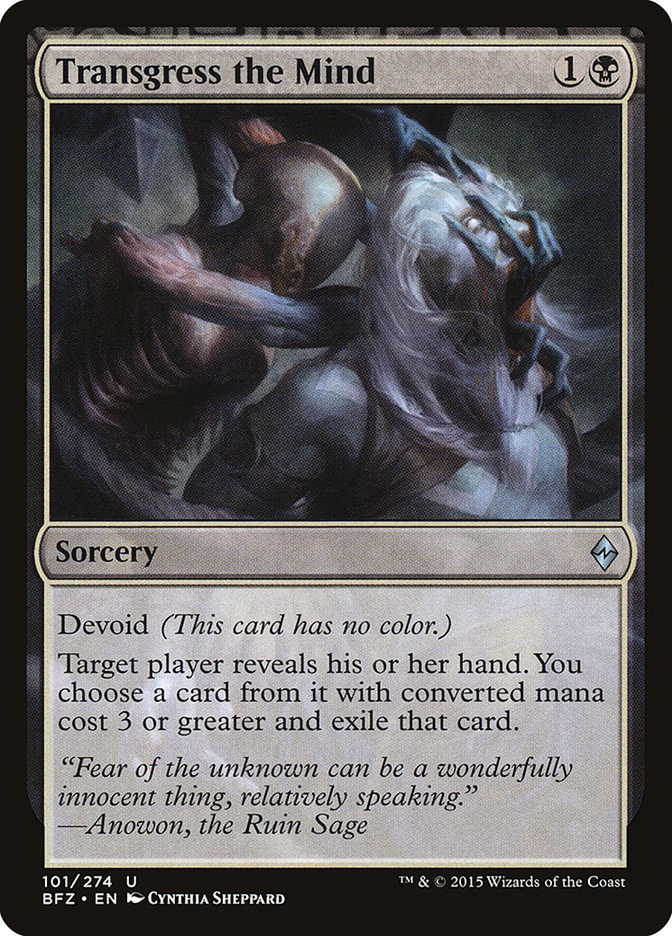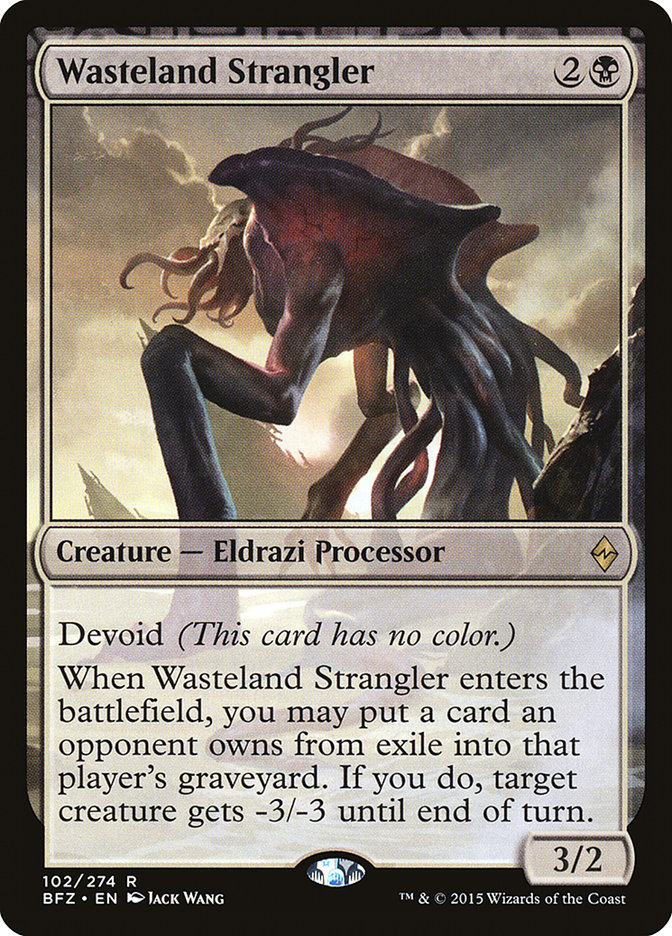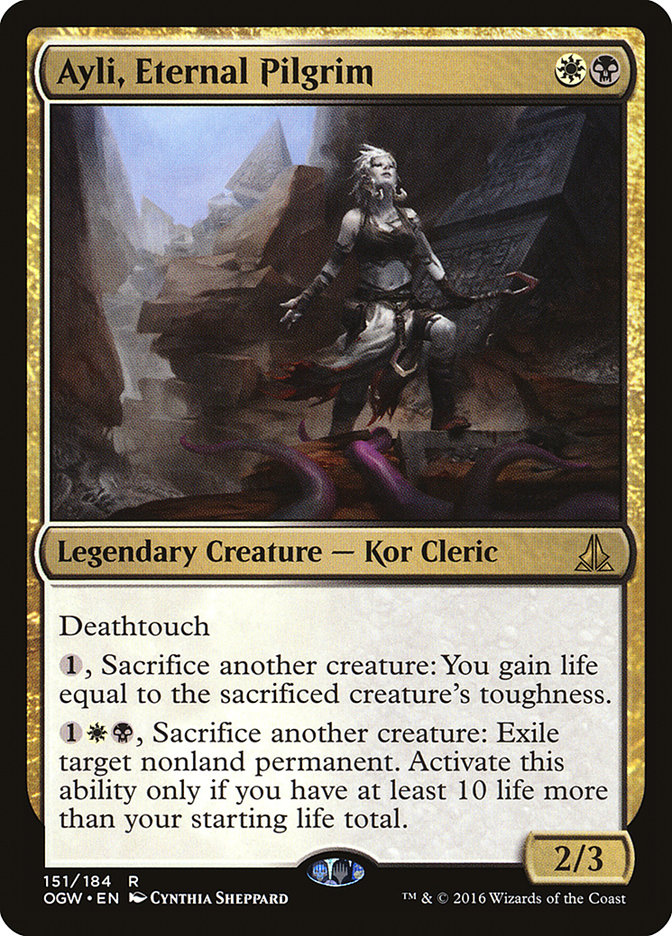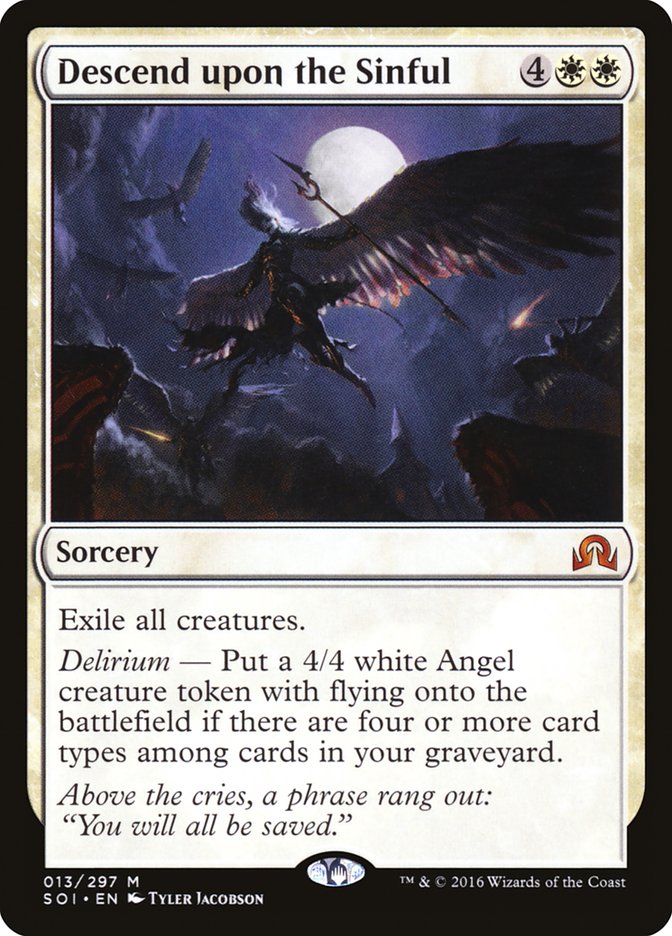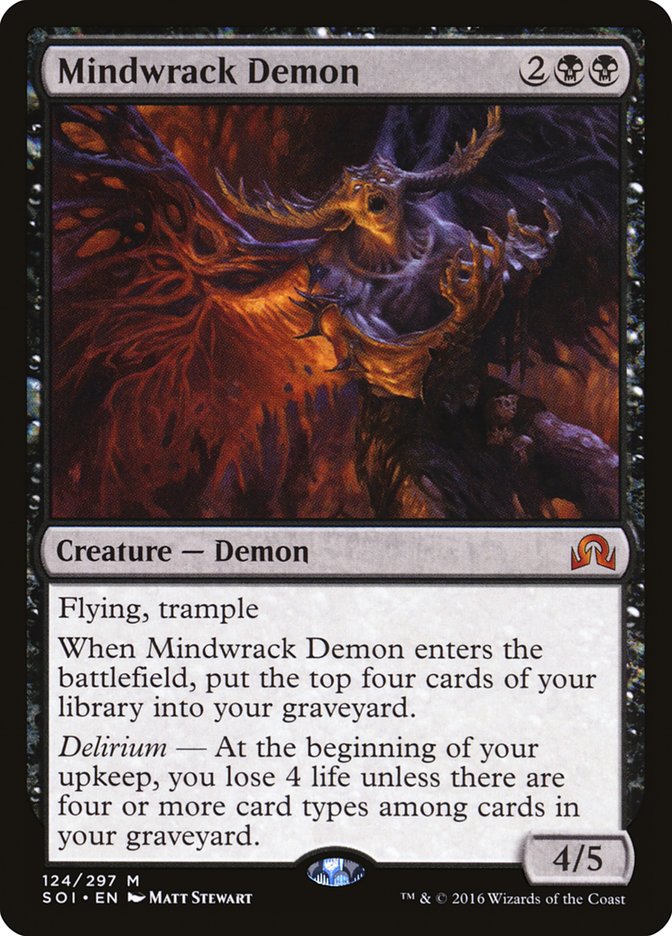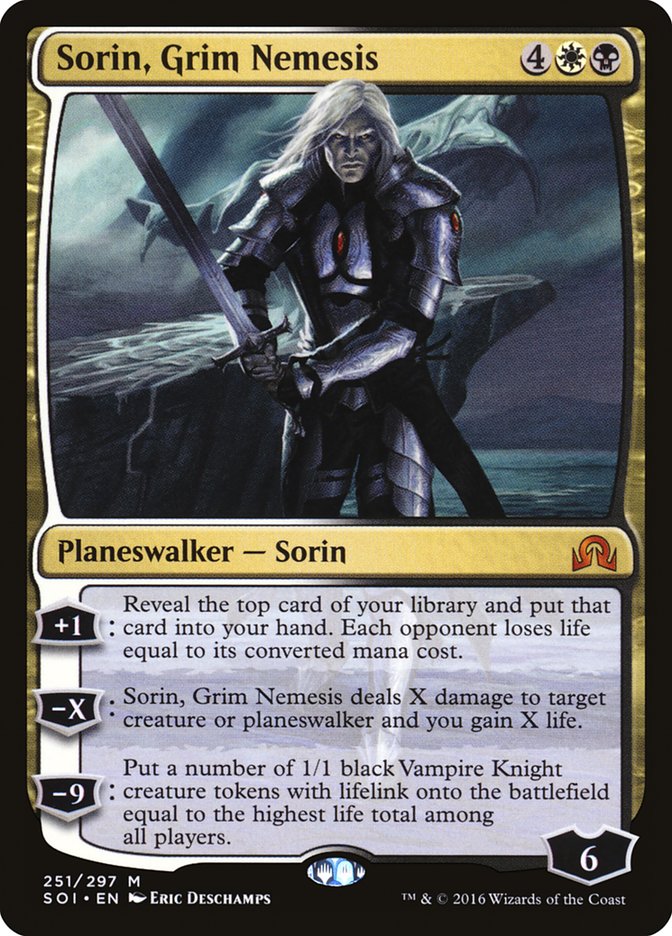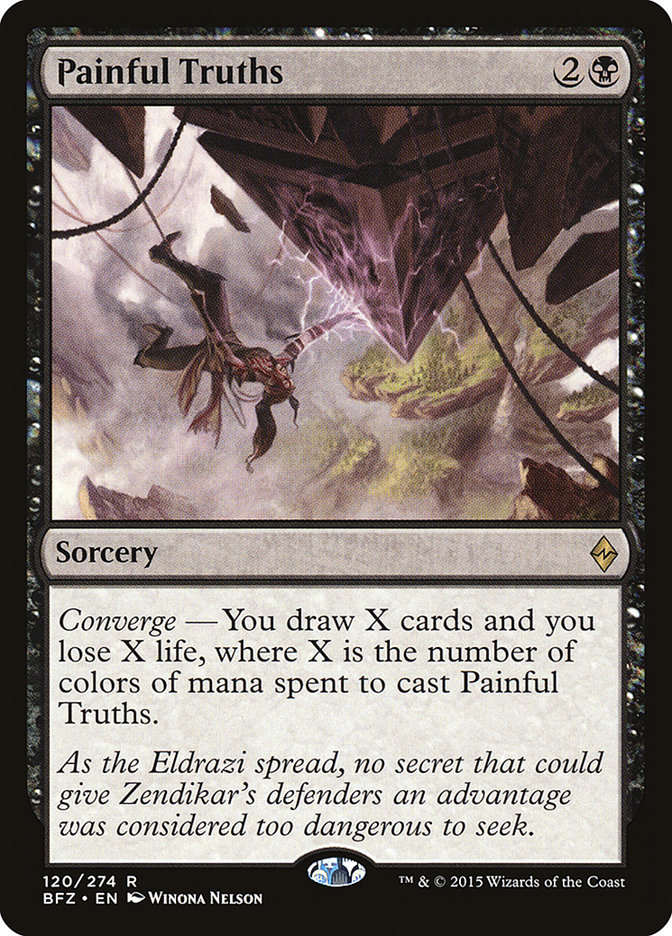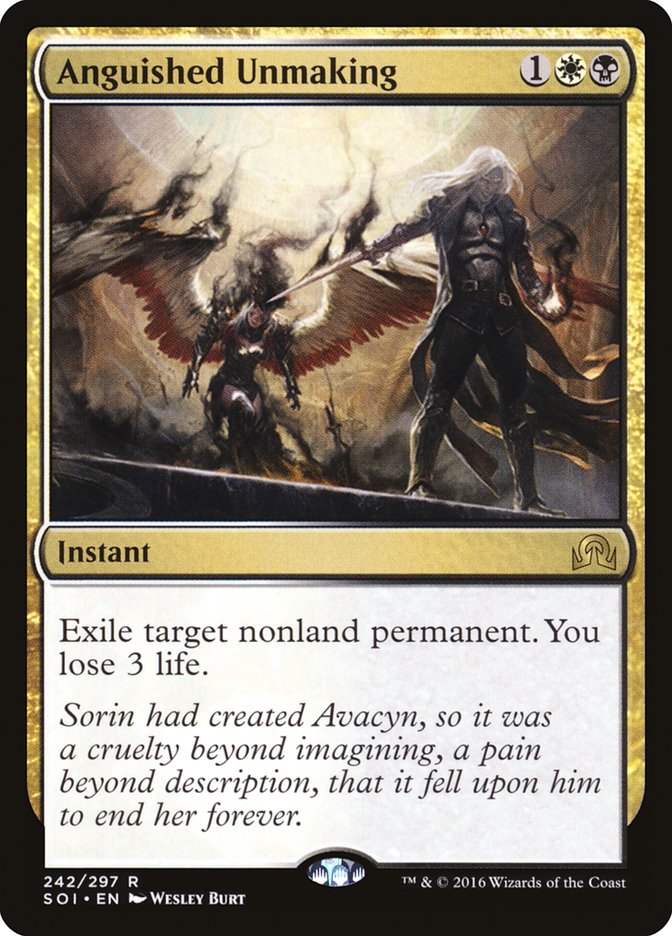Since the Pro Tour, B/G Delirium and W/U Flash have steadily been picking up shares of the metagame and pushing everything else out. After this weekend, it seems like if you can find any deck that can reliably beat those two decks, you should have good results in Standard. So how hard can it be to beat two standing targets when you know exactly what they both look like and what you need to do?
Apparently it’s pretty hard, as we haven’t seen the deck that does it yet, but it’s difficult to believe that it isn’t possible. I want to try to take a stab at it. I’m just getting back into Standard now, so this is all theorycrafting, but let’s see what we can craft.
I think it’s clear that Ishkanah, Grafwidow and Gideon, Ally of Zendikar are the stars of their respective decks so far. They’re the cards that carry the decks and give them the largest percentage, so I think a good start might be to try to play them both. I don’t believe that G/W Tokens is the answer. Instead, I’m interested in the fact that Ishkanah, Grafwidow is a five-mana spell that costs only a single green mana, so we can probably splash it without too much trouble.
I’m thinking Abzan. The trick is getting delirium without a green base, but I think we can do it.
A few starting points that pull me in this direction:
First, I’d really like to be able to maindeck Transgress the Mind. Neither B/G Delirium nor W/U Flash is super-aggressive and both rely on building up to a few big plays, like the aforementioned Ishkanah and Gideon. The information is crucial against W/U Flash in particular.
If I’m going to do that, I’d love to have good early defense, and I’m attracted to Wasteland Stranger as a card that matches up particularly well against W/U Flash’s creatures. To make that work, I’ll also want Stasis Snare or Declaration in Stone, although noting the possibility of doing it with Spell Queller is very tempting, but that’s a different deck.
Another card that really stands out to me is Ayli, Eternal Pilgrim. A 2/3 deathtouch matches up well against W/U creatures, Grim Flayer, and the stray aggressive decks in the format. It’ll also help get to my powerful end-game.
Speaking of having a powerful end-game, if I’m looking to beat two decks that are essentially midrange creature decks and I’m building a white delirium deck, Descend upon the Sinful sounds outstanding.
The trick will be getting delirium. Doing this without Grapple the Past isn’t easy. I could potentially use Mindwrack Demon, but it’s risky without additional support and a little vulnerable to Reflector Mage. I think it’s worth keeping in mind, but not something I want to rely on.
The first goal is going to keeping a good diversity of types. Beyond that, I’m thinking a few cards like Sinister Concoction or Collective Brutality could go a long way toward getting delirium.
The other question is how to make my mana work. W/U Flash and B/G Delirium are powerful decks with great mana. If mine’s shaky, it’ll put me at a significant disadvantage. The trick is going to be getting green mana as painlessly as possible. It’s clear that I’ll want Concealed Courtyard and Blooming Marsh, but I think the G/W two-color lands are going to be too unreliable, and I’d be better served by Evolving Wilds, since I need help with delirium anyway. Beyond that, I’m looking at Pilgrim’s Eye and Cultivator’s Caravan to round out my mana and diversify my card types.
So before finalizing a list, let’s look at the cards I’m interested in by type:
Creature:
Artifact:
Instant:
Sorcery:
Planeswalker:
Enchantment:
That’s twenty different cards, so it’s pretty unlikely that we’ll use all of them, but those are the considerations I’m thinking about. I need to remember that I want to actually beat both W/U Flash and B/G Delirium. I’m hoping that, as long as I can build a solid curve that’s resistant to Reflector Mage and Spell Queller and can reliably cast Ishkanah, Grafwidow, I’ll be advantaged there.
Next I need to make sure that I’m going over the top of B/G Delirium. My hope is that the maindeck Transgress the Mind does a lot of heavy lifting there, but I think Descend upon the Sinful is also outstanding in this role.
Now let’s look at how we can actually put these cards together into a deck with a curve and a gameplan:
Creatures (11)
- 2 Pilgrim's Eye
- 1 Wasteland Strangler
- 3 Ayli, Eternal Pilgrim
- 1 Archangel Avacyn
- 3 Ishkanah, Grafwidow
- 1 Noxious Gearhulk
Planeswalkers (7)
Lands (24)
Spells (18)

Breaking this list down by types, we have:
Creatures: 11
2 Pilgrim’s Eye
Instants: 4
Enchantments: 5
Artifacts: 5
2 Pilgrim’s Eye
2 Cultivator’s Caravan
Planeswalkers: 7
Sorceries: 7
2 Descend Upon the Sinful
That’s a great mix, which I think is necessarily with relatively few ways to put cards directly into the graveyard. Clearly not all cards are created equal–cards like Sinister Concoction or Dead Weight are much more likely to put an enchantment in your graveyard than a card like Stasis Snare, but it’s important to count things like Stasis Snare because Collective Brutality, Sinister Concoction, and Liliana, the Last Hope can put them in the graveyard.
Some thoughts on the numbers:
I imagined more Wasteland Stranglers, but I want both Collective Brutality and Transgress the Mind for enabling different parts of my deck, yet I didn’t really feel like I could play more than five total copies of those cards, so being pulled in different directions cut into some of my exiling.
Similarly, the need for Grasp of Darkness as an instant on top of those cards at two pushed Declaration in Stone out of the equation, and then I felt like I had too many three-cost spells to want a full four Stasis Snares, so I ended up a little short of where I’d want to be to support a lot of Wasteland Strangers (Descend upon the Sinful also exiles, but I’d like to cast Wasteland Strangler earlier than that). I felt like I could get away with one and I’d be happy with it, but it felt dangerous to play more. If I draw one, I can wait until I find a way to exile something, but if I draw no ways to exile and two Wasteland Stranglers, I’m going to be in a really bad spot.
I originally imagined that I’d probably want Sorin, Grim Nemesis; Linvala, the Preserver; or Emrakul, the Promised End in the maindeck to secure the late-game, but with Descend upon the Sinful and Noxious Gearhulk, it just felt like too much, and I think it’s really important to have early plays in this format, so I had to keep the top-end small and push the rest of what I could fit into the sideboard.
One of the biggest questions for me is Painful Truths.
It’s possible that the key is to build the deck around Painful Truths, but I think we have too much late-game, meaning not enough space for cheap interaction and not enough lifegain, so Painful Truths is too slow against aggressive decks and too vulnerable to Spell Queller, but I could easily see this being absolutely game-breaking against B/G Delirium, so I went with several of them in my sideboard to play it safe.
Anguished Unmaking is a similar card. I originally wanted Ruinous Path in my sideboard so that I could answer planeswalkers, since I’m relatively low on threats, but then I realized that Anguished Unmaking both helps exile cards and better diversifies my types. There’s some concern that it’s too much life loss in conjunction with Painful Truths, but I’ll have Shambling Vent, Noxious Gearhulk, and Linvala, the Preserver (which I think you have to bring in just for the lifegain if you bring in all the cards that lose life) to try to offset that.
I was also concerned about not having any Naturalize effects, and Anguished Unmaking helps a lot against Aetherworks Marvel, for example, where it can exile Aetherworks Marvel itself or even Ulamog, the Ceaseless Hunger (not that exiling Ulamog if they have Aetherworks Marvel and have exiled two of your cards is likely to be enough to win the game, and most lists these days don’t seem to include Ulamog anyway).
It’s hard to theorycraft a list that beats decks that have been refined by thousands of players for weeks of tournaments, so this deck probably needs some tuning, but I think the theory is sound. Basically, Ishkanah’s great, and the planeswalkers have largely pushed blue control out of the metagame. I think Descend upon the Sinful seems fantastic against B/G Delirium, and exiling creatures in general seems like a big advantage in the Emrakul, the Promised End mirror. The key is to acknowledge that Ishkanah is beating everyone and then figure out which cards are actually good against it.
The point is that when the format looks like it does, we know which cards are great in the format, and we know how the best decks play out. There should be a way to solve a metagame this narrow. It will always be hard to beat tuned decks with untuned decks, so it’s going to take work, but giving up isn’t required.
That being said, the success of these decks has reached historically extreme numbers. Formats don’t usually compact this much exactly because formats like this are exploitable, and that keeps the metagame moving. It everyone’s failed to break it for weeks, I can’t promise that your time is better spent being the x-thousandth person to try and fail to build a better deck rather than just learning to play one of the successful decks well.


